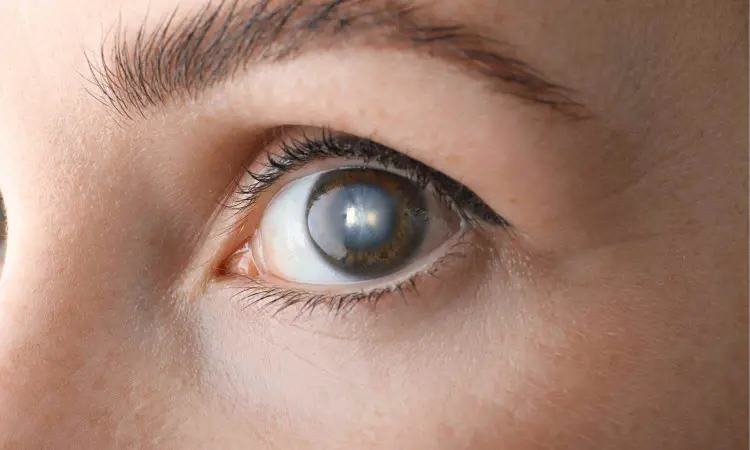- Home
- Medical news & Guidelines
- Anesthesiology
- Cardiology and CTVS
- Critical Care
- Dentistry
- Dermatology
- Diabetes and Endocrinology
- ENT
- Gastroenterology
- Medicine
- Nephrology
- Neurology
- Obstretics-Gynaecology
- Oncology
- Ophthalmology
- Orthopaedics
- Pediatrics-Neonatology
- Psychiatry
- Pulmonology
- Radiology
- Surgery
- Urology
- Laboratory Medicine
- Diet
- Nursing
- Paramedical
- Physiotherapy
- Health news
- Fact Check
- Bone Health Fact Check
- Brain Health Fact Check
- Cancer Related Fact Check
- Child Care Fact Check
- Dental and oral health fact check
- Diabetes and metabolic health fact check
- Diet and Nutrition Fact Check
- Eye and ENT Care Fact Check
- Fitness fact check
- Gut health fact check
- Heart health fact check
- Kidney health fact check
- Medical education fact check
- Men's health fact check
- Respiratory fact check
- Skin and hair care fact check
- Vaccine and Immunization fact check
- Women's health fact check
- AYUSH
- State News
- Andaman and Nicobar Islands
- Andhra Pradesh
- Arunachal Pradesh
- Assam
- Bihar
- Chandigarh
- Chattisgarh
- Dadra and Nagar Haveli
- Daman and Diu
- Delhi
- Goa
- Gujarat
- Haryana
- Himachal Pradesh
- Jammu & Kashmir
- Jharkhand
- Karnataka
- Kerala
- Ladakh
- Lakshadweep
- Madhya Pradesh
- Maharashtra
- Manipur
- Meghalaya
- Mizoram
- Nagaland
- Odisha
- Puducherry
- Punjab
- Rajasthan
- Sikkim
- Tamil Nadu
- Telangana
- Tripura
- Uttar Pradesh
- Uttrakhand
- West Bengal
- Medical Education
- Industry
Patching after age 4 does not modify visual acuity in children treated for unilateral congenital cataract: Study

Pediatric ophthalmology researcher Carolyn Drews-Botsch's research helps parents and health care providers decide whether or not to continue patching their children who were treated for unilateral congenital cataract (UCC) after the child’s vision can be reliably tested.
Her paper published in Ophthalmology reports:
• Patching children after age 4 does not dramatically change their ability to see fine details at a distance (visual acuity).
• Optotype acuity assessments in 4-year-olds who were treated for unilateral congenital cataract are reliable and predictive of their visual acuity at age 10.
• Less-aggressive patching protocols may be warranted in some children if patching is a source of stress for the family and/or distress for the child since continued aggressive patching is unlikely to provide significant improvements to vision after age 4.
• Before discontinuing eye patching, consider the effect of patching on the child’s quality of life, family relationships, visual field with one and two eyes (including latent nystagmus, a type of involuntary, rhythmic eye movement in one eye).
Optotype acuity is the measurement of a person’s ability to see fine details and distinguish between different visual elements, like an O and a Q. An eye chart is used to measure how well a person can see at various distances.
Other UCC research from Drews-Botsch finds that:
• Established patching habits in infants approximately doubles the likelihood that children with UCC will strengthen their vision to normal level, considered 20/40 or better.
• Prolonged eye patching does not have negative impact on family stress levels or child’s development.
Children with UCC are born with cloudy or opaque vision in one eye that, if left untreated, can result in blindness in that eye. After the surgery, occlusion therapy is prescribed to avoid lazy eye (deprivation amblyopia). Also known as patching, occlusion therapy is when the child wears a patch covering the eye that did not have the cataract and it is needed to allow vision in the affected eye. However, even with the best treatment, about half of these children will remain legally blind in the treated eye.
Reference:
Drews-Botsch, Carolyn D. et al., Is Patching after Age 4 Beneficial for Children Born with a Unilateral Congenital Cataract?, Ophthalmology, DOI: 10.1016/j.ophtha.2024.11.005
Dr Kamal Kant Kohli-MBBS, DTCD- a chest specialist with more than 30 years of practice and a flair for writing clinical articles, Dr Kamal Kant Kohli joined Medical Dialogues as a Chief Editor of Medical News. Besides writing articles, as an editor, he proofreads and verifies all the medical content published on Medical Dialogues including those coming from journals, studies,medical conferences,guidelines etc. Email: drkohli@medicaldialogues.in. Contact no. 011-43720751


